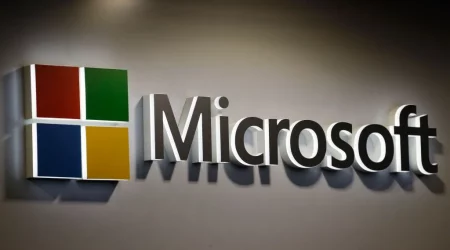Is the Metaverse the Next Internet Revolution?
If the Metaverse takes off, we’ll see a hybrid world of real-world business and virtual entertainment, with the latter being more advantageous in a pandemic or hybrid situation. In addition, we’ll see unprecedented interoperability, full-fledged economies, and new hardware capabilities. And, of course, we’ll see a virtual room or two replacing video-conferencing. If you think the Metaverse is only a game, think again.
Table of Contents
Face-to-Face Experiences May Be Beneficial
We live in an increasingly digital world where people can interact with each other in 3-D virtual worlds. This type of environment offers a new dimension to social and business relationships. For example, a hybrid situation may involve students and teachers in real-time collaboration. In hybrid environments, face-to-face experiences may be particularly beneficial.
Although the Metaverse is initially viewed as a gaming platform, its potential to enhance business processes in the HR, marketing, and CRM sectors is increasingly evident. Gamification, a long-standing strategy, is already in play in the corporate sector. In hybrid environments, adding gamification elements could lead to improved eLearning and employee experience.
When creating a hybrid situation in the Metaverse, educators should consider the potential benefits of face-to-face interactions for students. While virtual spaces can be helpful for some students, they may not be appropriate for all children. The benefits of a hybrid environment are primarily dependent on the goals of each group of learners. The Metaverse can help to simulate real-world social situations and create virtual boardrooms.
Immersive technology offers transformative new opportunities for the human experience. It will require a profound change in businesses, branding, and innovation. Many companies are already experimenting with this technology and leveraging existing gaming platforms. The benefits of virtual reality are immense, but the benefits for human relationships may be marginalized. With more research and development, we can create better experiences for our customers and communities.
In the future, our work environments will be fully immersive and interactive. In this type of workplace, employees will be able to communicate in different ways, and managers will be able to monitor their team’s productivity with greater accuracy. The Metaverse also enables workers to create 3D models of anything they can imagine, including buildings, cars, and people.
Full-fledged Economy
The future of the global economy is about to be transformed, thanks to the emerging Metaverse. This virtual world will support people, places, and experiences that will serve as the basis of a separate virtual economy. Moreover, it will facilitate virtual jobs. There are many opportunities to explore in this environment, but they are nearly too vast to be fully grasped by us. The opportunity to create and develop a 3-D digital presence in conjunction with a physical one will be truly remarkable.
One of the most promising applications of the Metaverse is developing a virtual training ground for people. Businesses can send staff members on virtual training programs, which could eventually lead to higher wages and national economic growth. However, such programs require massive investments in digital infrastructure to remain profitable. The first step in building the Metaverse is to understand its value proposition. The idea of a virtual training ground is relatively novel, and a full-fledged economy will have many uses.
Moreover, the benefits of the Metaverse for businesses are numerous. For one, companies can set up a virtual counter display or VR offices. Meanwhile, others will be able to create VR offices and even build virtual counter displays. Several companies have already realized the importance of a strong presence in the Metaverse. Alibaba, for instance, has already built a virtual mall in China.
The possibilities of the Metaverse are endless. From social connection to virtual travel, from gaming to the exploration of remote properties, to digital identity and digital assets, Metaverse has something for everyone. With its massive potential to create a digital identity and assets, it could change the face of internet consumption for decades to come.
Read More: What Are the Features Can We Expect From Metaverse?
Unprecedented Interoperability
The Internet’s rapid expansion can be attributed to its sharing of information. The Internet began with the exchange of information about how the network operated and the design of new features. These documents, known as RFCs, were vital to evolving new capabilities for the network. They are still essential to the evolution of the Internet, but their purpose has changed. Today, RFCs focus on protocols and standardization, and their future is in sight.
The IETF grew out of the Internet Activities Board, a body that operated under the auspices of the Internet Society. This organization took on the role of the standardization organization for the Internet. It was the model for network access points. Its leadership evolved into the Internet Society, which acted as a peer to the IESG.
The Internet has become increasingly integrated into society, with the development of a complex and often invisible ecosystem. Internet users have increasingly complex expectations of the experience of the web. The next Internet revolution is unprecedented in its ability to create a personalized online experience.
The next Internet revolution will result in an expanded Internet. The technology will expand connectivity to nearly every corner of the planet, and the Internet will become ubiquitous, making it as necessary as oxygen. The era of mostly unregulated technology may be over, and a new era of regulation is likely to take hold. With available connectivity, people cannot disconnect from their connected worlds. In 50 years, the Internet may be as common as breathing.
Communities and technologies have become more critical than ever, and the success of the Internet is primarily a result of satisfying basic community needs and leveraging this community. The Internet has a history of community spirit, evident with the ARPANET’s development.
Hardware Capabilities
The global metaverse market is driven by the growth of personal disposable income and the advent of novel technologies. The market players focus on novel solutions, adopt cutting-edge technology, and invest in R&D activities. Facebook recently announced that it would invest USD 10 billion to build a metaverse by 2021, and the company’s name has been changed from Facebook to Meta. Facebook’s metaverse platform allows users to communicate with digital avatars. As more companies invest in the metaverse market, this investment will open up massive opportunities for industry players worldwide.
While the Metaverse is a digital environment that can be experienced using the devices, it can also be accessed via physical devices. Several devices are already available, and the capabilities are improving rapidly. Apple’s Object Capture feature lets users create high-fidelity virtual objects. Some new smartphones contain ultra-wideband chips that emit 500 million RADAR pulses per second and process the information returned.
With the advent of powerful devices, the Metaversecano function on two levels. The first level is augmented reality, where avatars can be placed in real-world settings. The second level is immersive virtual environments, typically experienced through headsets. As a result, avatars are used in various applications, including entertainment, communications, education, and work-related activities. The applications of the Metaverse will affect nearly every aspect of our lives.
In the end, the network must be equipped with high-speed broadband connections for the Metaverse. These networks must be able to handle the volume of data sent and received by the players in the virtual world. While high-speed Internet connections have enabled these technologies, they also have a significant problem: latency. Low latency is essential for AAA online multiplayer games. The latency must be as low as possible for the players to respond within the required time.








Leave a Reply